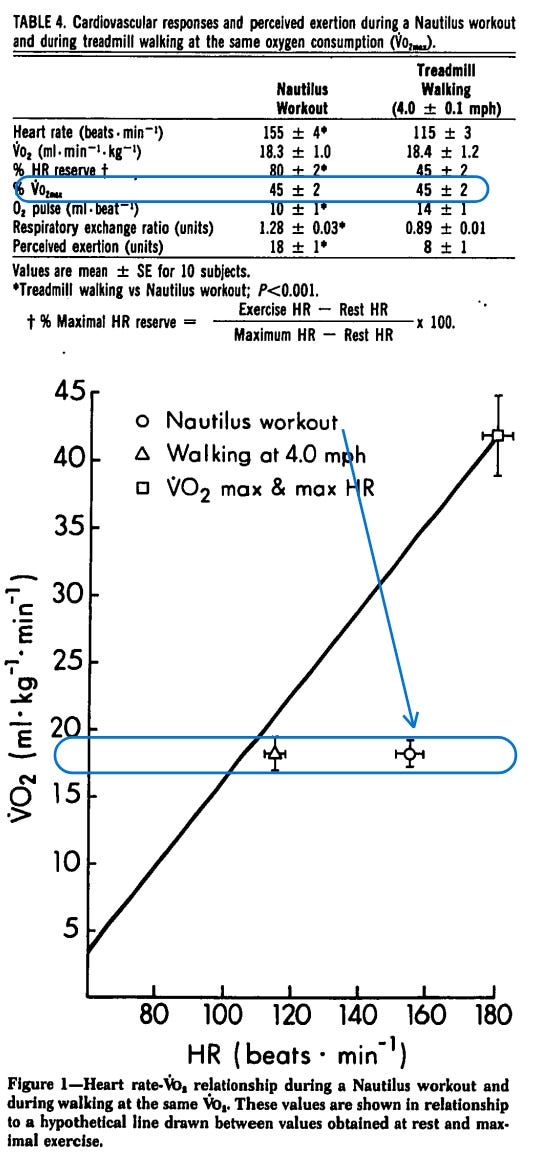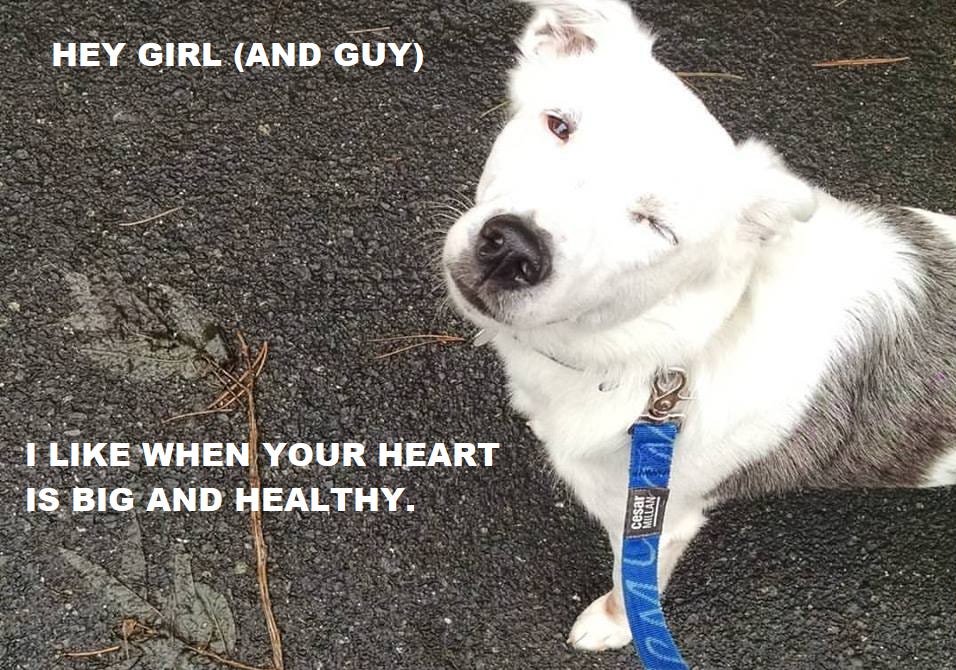This is from a series that I wrote back in 2019. From 2012-2019 I was a NASM-CPT, CES, Pn1, and my differentiating factor as a trainer was that I was trained in nutrition coaching & wildly bullish about cardiovascular training. Go read the first part of this, if you haven’t yet. Today we’re going to elaborate on this brilliantly witty quote:
“Having a high heart rate doesn’t mean you’re doing cardio. If that was the case, I could scare you into better shape.” - Kenneth Jay (author of The Cardio Code)
What is cardiovascular training?
Let's begin by defining what we're discussing. It is essential to define "cardiovascular training" now, because it will set the stage for the rest of the article and the programming notes.
However, before we proceed, if you don't have a background in cardiovascular physiology, I recommend reading ‘The first principles of cardiovascular training’ first, before diving into this article. This dish is even more delicious when paired with the meat and potatoes that complement it!
Taking from Kenneth Jay, MSc, PhD, mentioned in that previous post, cardio-vascular training has two components:
Cardio refers to the heart
Vascular refers to the vessels that carry the blood.
Therefore, "cardiovascular exercise" is:
Any form of exercise that improves heart and circulatory function and efficiency via central and peripheral changes and aerobic and anaerobic energetic pathways.
This means that cardiovascular exercise accomplishes:
Increasing the volume of blood that the heart can move. This is accomplished by increasing stroke volume secondary to eccentric hypertrophy (increased left ventricle diameter). We'll discuss heart hypertrophy in more detail later.
Improves the efficiency with which the heart moves blood. A decreased resting heart rate and an increased ejection fraction secondary to an increased stroke volume accomplish this. Remember, a greater stroke volume means that you can hit your cardiac output demands with fewer beats per minute (CO = SV*HR). Ejection fraction is simply the volume of blood ejected from the heart with each contraction; this is a function of stroke volume. A big, strong heart is a sexy heart.
Improves the body's ability to extract and use the oxygen that the heart moves with the blood. This is seen when our mitochondrial and capillary density increases, thus increasing VO2. Remember that [VO2 = Cardiac Output * (Arterial Oxygen Content - Venous Oxygen Content)]. By training the cardiovascular system, we observe increases in cardiac output, which, in turn, will enhance VO2. Additionally, through increases in mitochondrial and capillary density, we will observe a decrease in venous oxygen content. A decrease in venous oxygen content reflects a greater extraction and utilization of oxygen, which corresponds to a higher VO2.
Enhances the ability to use proper fuels and dispose of wastes efficiently. This is accomplished through increased capillary density, which facilitates the removal of carbon dioxide (CO2) and lactate, as well as upregulating oxidative enzyme activity and pH buffering capacity. Additionally, through improved anaerobic and aerobic energy fuel selection, the body utilizes more efficient fuels during various activity intensities.
Now this is all well and good, but what does this translate to in real-world terms?
The results of quality cardiovascular training mean that you can work at higher intensities while expending less energy, you can extract and use more of the oxygen that your heart and lungs are providing for energy production, you can optimize your metabolic fuel selection, and you can recover more quickly by removing wastes more readily and providing more oxygen and nutrients more readily.
Weightlifters, this translates to improved capacity for higher-intensity sets and faster recovery between sets, allowing for a greater volume of sets. This translates to greater opportunities for improvements in strength and hypertrophy, also known as ‘gainz.’ (I told you your heart's got your back.)
Heartbreaker (no pun intended):
Circuit training with weights and/or lifting weights as quickly as possible is not considered cardiovascular training.
You're probably thinking, "I call bullpoop! I could make you drop in a puddle of sweat, heart pounding into your rib cage, gasping for air with a 10-minute weight circuit!"
To which I say, "Yep! You're definitely right, you could. But that does not mean this is cardiovascular training, as defined above. Though I may feel my heart pounding, it does not mean you are strengthening it in any significantly useful way."
This is demonstrated in the research on "lifting weights fast." Performing full-body circuits, high-rep squatting, burpees, Olympic lifts, and even the CrossFit Fran workout only hits around 35-60% of VO2max; numbers may reach as high as 70% VO2max on a good day.

Keep in mind that the more conventional forms of cardiovascular exercise allow you to hit 100% VO2max (and higher). Makes CrossFit's 35-70% seem a bit disappointing from a ‘big, sexy heart’ standpoint.
Another example is demonstrated in a study of untrained men undergoing a 16-week high-intensity strength training program. The program required moving as quickly as possible and maintaining a high heart rate. These men experienced an average 44% increase in strength, but did not see an increase in VO2 max.

The takeaway here is that weightlifting will make your heart pound and your breath race, but only as a compensation to try to maintain a baseline level of blood and oxygen flow. Ultimately, unless you are a sedentary couch potato jumping into weight circuits, you are not making a dent in your VO2 or cardiovascular efficiency.
2025 Update/Nuance: Please keep in mind that we’re discussing cardiovascular training in a vacuum in this series. We’re asking, ‘How do I improve cardio-vascular health and performance?’ And the best way is coming up below. However, stepping out of this myopic series on cardio - YES - you absolutely should be strength (resistance) training. A 2025 paper out of the Journal of Strength & Conditioning corroborates this. Do you want to improve running (cardio) performance and running economy? Strength training that is not focused on hypertrophy can help you actually maintain your VO2 and improve your running. So, please don’t miscontrue anything and think I’m anti-strength training.
The defining parameters of cardiovascular training.
Several factors, defined by their ability to limit oxygen uptake, help us determine which activities will elicit maximal VO2 and create legitimate, beneficial cardiovascular adaptations.
The movement must activate and use at least 50% of the body's muscle mass.
The movement must involve the rhythmic contraction and relaxation of agonist-antagonist muscle groups.
The movement must allow for proper, fluid breathing mechanics.
The movement must last longer than 2 minutes and hit >50% of VO2max
The movement must activate and use at least 50% of the body's muscle mass.
Once we go over 50% of muscle mass, the ability to dilate vessels and use oxygen is greater than the ability of the cardiovascular system to deliver the oxygen. If we can make oxygen delivery (not oxygen extraction) the limiting factor, then we have the potential to elicit maximal VO2.
The movement must involve the rhythmic contraction and relaxation of agonist-antagonist muscle groups.
If we have prolonged contractions, we impair oxygen delivery in the microvascular circulation. In heavy lifts, the contractions are strong enough to impede blood flow back to the right atrium. Without adequate venous return and cardiac output, we don't have the potential for maximal VO2. Thus, we require the rapid and rhythmic contraction of opposing muscle groups to facilitate the unobstructed return of blood to the heart.
The movement must allow for proper, fluid breathing mechanics.
One of the defining characteristic adaptations that occurs from cardiovascular training is expansion of the left ventricle diameter in order to increase stroke volume. Breath-holding that occurs in weight lifting can actually limit venous return to the right atrium through compression of the superior vena cava. This lack of blood return to the heart will not stimulate the heart to expand. For an exercise to increase VO2, it must allow for breathing and ventilation that do not limit blood return and oxygenation.
The movement must last longer than 2 minutes and hit >50% of VO2max.
We need to hit at least 50% of our VO2max to stimulate changes in internal diameter (stroke volume). During the first 2 minutes or so of exercise, there is an oxygen uptake delay while the aerobic system "warms up." During this initial period, the stroke volume of the heart is not really stimulated. After these 2 minutes, we can promote change. The best cardiovascular exercise (improving VO2max) requires intensities of 100% VO2max with bursts of intensities even higher! This uptake delay also lends support to the need for a specific time duration for cardiovascular exercise to observe changes in stroke volume and VO2.
Best exercises for developing the cardiovascular system:
Running
Rowing
Cross-country skiing
Cycling
Kayaking
Versaclimbing
Honorable mentions
Swimming
Boxing
Rope Skipping (greater effects in women compared to men)
That's right! Keeping it simple is sometimes (often) best. All of these exercises fit the criteria for a cardiovascular workout and help achieve the parameters that define success in cardiovascular training.
In the next post of this series, we will discuss cardiovascular programming. We will discuss how to translate this complex physiology into practical training applications.
Quick Recap

“What is cardiovascular training? What are the outcomes?”
"Cardio-vascular" training addresses the heart and the vascular system
"Any form of exercise that improves heart and circulatory function and efficiency via central and peripheral changes and aerobic and anaerobic energetic pathways."
This means cardiovascular training must:
Increase stroke volume of the left ventricle and not obstruct return of blood to the heart
Deliver oxygen to working muscles while removing CO2 and lactate
Increase capillary density by stimulating the formation of new capillaries
Increase the ejection fraction and oxygen extraction (arterial O2-venousO2 difference)
Improve aerobic and anaerobic energy turnover
“Can't I just elevate my heart rate and call it good?” (Nope.)
Remember, just because your heart is beating faster does not mean it is developing cardiovascular fitness in any helpful way.
Most circuit-style weight training (including specific CrossFit workouts that exclude traditional cardio) will only hit 35-60% of VO2max.
To significantly improve our VO2max and cardiovascular fitness, we need to reach 100% VO2max and have a burst of intensity even greater than 100% VO2max.
“So, what defines a movement or exercise as cardiovascular training?”
The movement must activate and use at least 50% of the body's muscle mass.
The movement must contain rhythmic, contraction and relaxation of agonist-antagonist muscle groups.
The movement must allow for proper, fluid breathing mechanics.
The movement must last longer than 2 minutes and hit >50% of VO2max
“What are the best exercises to achieve those parameters?”
Best: Running, Cycling, Rowing, Cross-country skiing, Versaclimbing, and Kayaking
Close to best: Swimming, Boxing, and Rope Skipping (primarily for women).
Resources:
Jay, Kenneth. The Cardio Code - Limitless Cardio-Vascular Health and Performance 1st Ed. Slangerup, Velocity ApS. 2014.
Powers, S. & Howley, E. (2007) Exercise Physiology: Theory and Application to Fitness and Performance (6th ed). McGraw Hill.
Robbins, P. (2008) Cardiorespiratory Training for Fitness. National Academy of Sports Medicine.
